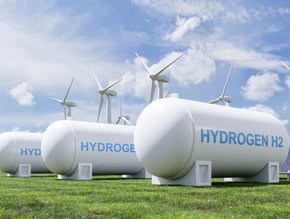Hydrogen Key to Energising Industry’s Future

There has been a surge in renewable energy solutions thanks to trends such as the global push for decarbonisation. But for some areas, like heavy industries, heating, aviation and shipping, there have been sticking points and teething problems that stand in the way of making renewables more accessible.
But that’s where hydrogen comes into play: emerging as a promising solution across sectors such as the aforementioned, hydrogen offers a cohesive value chain, encompassing low-carbon hydrogen production, storage and distribution — factors that prove crucial to a more eco-conscious future.
As it stands, more than 98% of global hydrogen is fossil fuel-based, which is a catalyst for the industry to pioneer low-carbon production techniques, focusing on blue hydrogen — natural gas reforming with CO2 capture — or green hydrogen, a process using water electrolysis via renewable energy.
“Renewable energy, electrification and battery storage are primary solutions,” Chingis Idrissov, Technology Analyst at IDTechEx explained. “Hydrogen offers a promising solution for challenging sectors. Its potential as a fuel, energy carrier and chemical feedstock has led to many governments formulating national hydrogen strategies. Consequently, companies are seizing market opportunities, supplying a range of services, products and technologies. The burgeoning hydrogen market is drawing attention from stakeholders globally.”
Idrissov advocates that a cohesive value chain is essential for realising hydrogen’s potential, encompassing low-carbon hydrogen production, storage and distribution infrastructure, which align with end-user demand.

“Analogous to the oil and gas sector, the hydrogen value chain comprises upstream — production — midstream — storage and transport — and downstream — end-use — segments. Each segment poses unique technical and socio-economic challenges.”
This has been highlighted in IDTechEx’s Hydrogen Economy 2023-2033: Production, Storage, Distribution & Applications report.
The positives of blue hydrogen
Blue hydrogen, which is derived from natural gas, is billed as one of the most cost-effective low-carbon hydrogen production methods available on the market, which has an estimated levelised cost of hydrogen (LCOH) of around US$2-4/kg H2. To compare, green hydrogen — hydrogen produced by the electrolysis of water — has a much higher LCOH at around US$4-10/kg H2, which solidifies blue hydrogen’s position as a transitional solution until green hydrogen becomes more commercially viable.
*******************
Make sure you check out the latest edition of Energy Digital Magazine and also sign up to our global conference series - Sustainability LIVE 2024.
*******************
Energy Digital is a BizClik brand.






